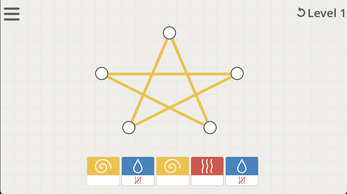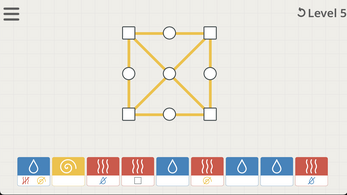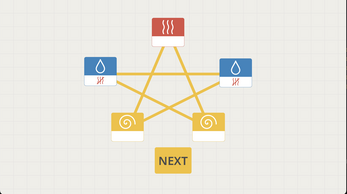Shaman v2
In this logic-based puzzle game, place elemental cards—Fire, Water, and Air—onto the nodes of a graph. Each card may have constraints: it can require or forbid connections to certain elements, or demand placement on nodes with a specific shape (square or circle). If a card does not staisfy a constraint it will turn gray.
| Status | In development |
| Platforms | HTML5 |
| Author | ditiem.games |
| Genre | Puzzle |
| Made with | Godot |
| Tags | 2D, Casual, Indie |



Comments
Log in with itch.io to leave a comment.
Some quick feedback after playing all ~7 levels...
Bugs + points of improvement:
General opinion:
Thank you a lot for the review! I agree with all the points except with the one that you say "If you put Fire next to Water". That is a total different game, closer to ITST or Dino Sort. I have some ideas for that kind of mechanics, but I will leave them for another game. The first "bug" is a real bug in Godot and so far I dont know how to fix it.
This is a small teaser where I would like to get more broadview than the people that is close to me. As an spoiler, yes, there are more elements (and curiously it does not increase complexity). There are more constraints, and the node types are more heavily used in harder levels. My current concern is whether I should go for hard puzzles or easy ones. I lean more towards hard puzzles, but surprisingly the levels 6 and 7 have been reported to be easy.
Thanks again for the detailed feedback! I really appreciate it, it really helps a lot.